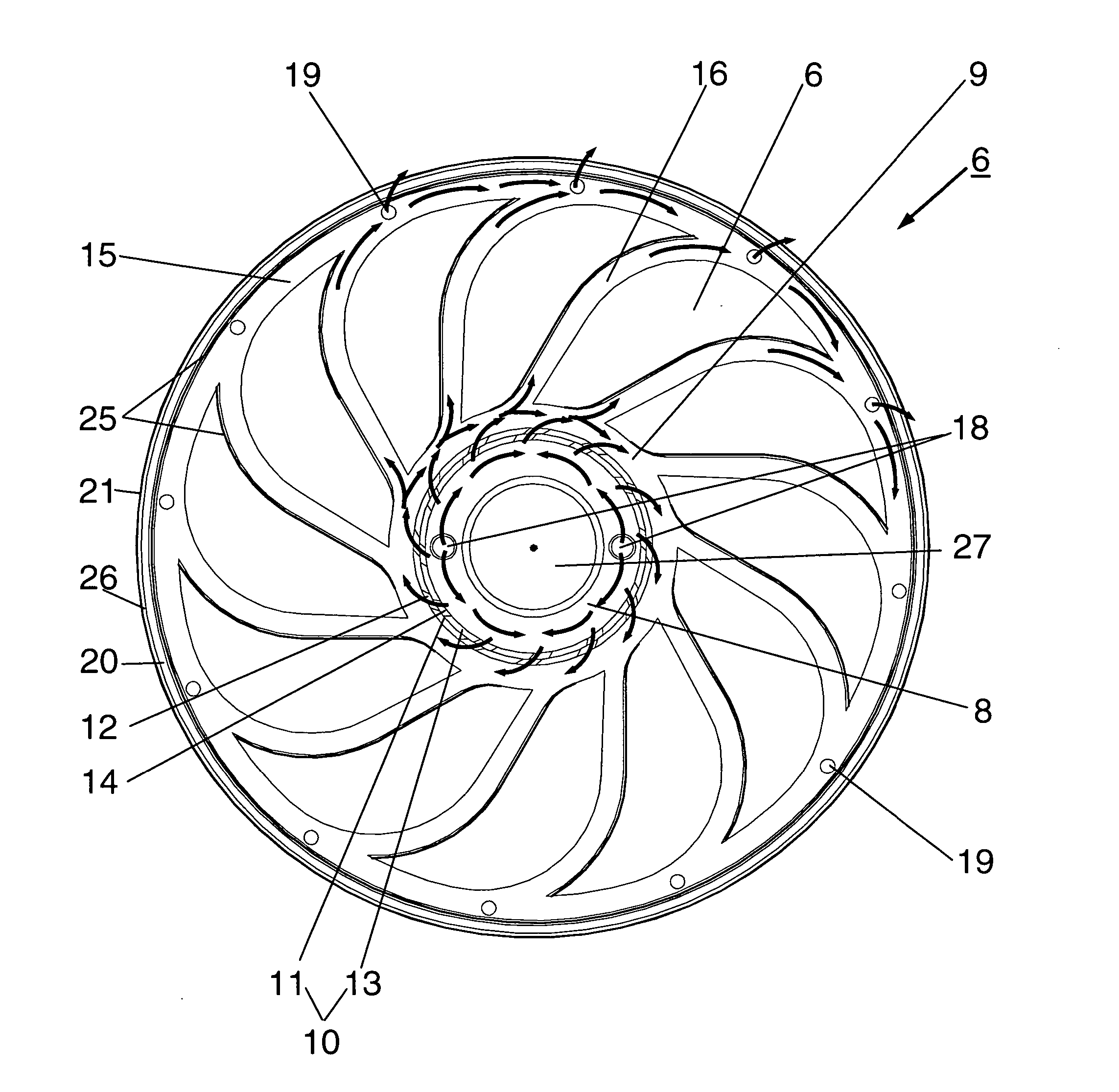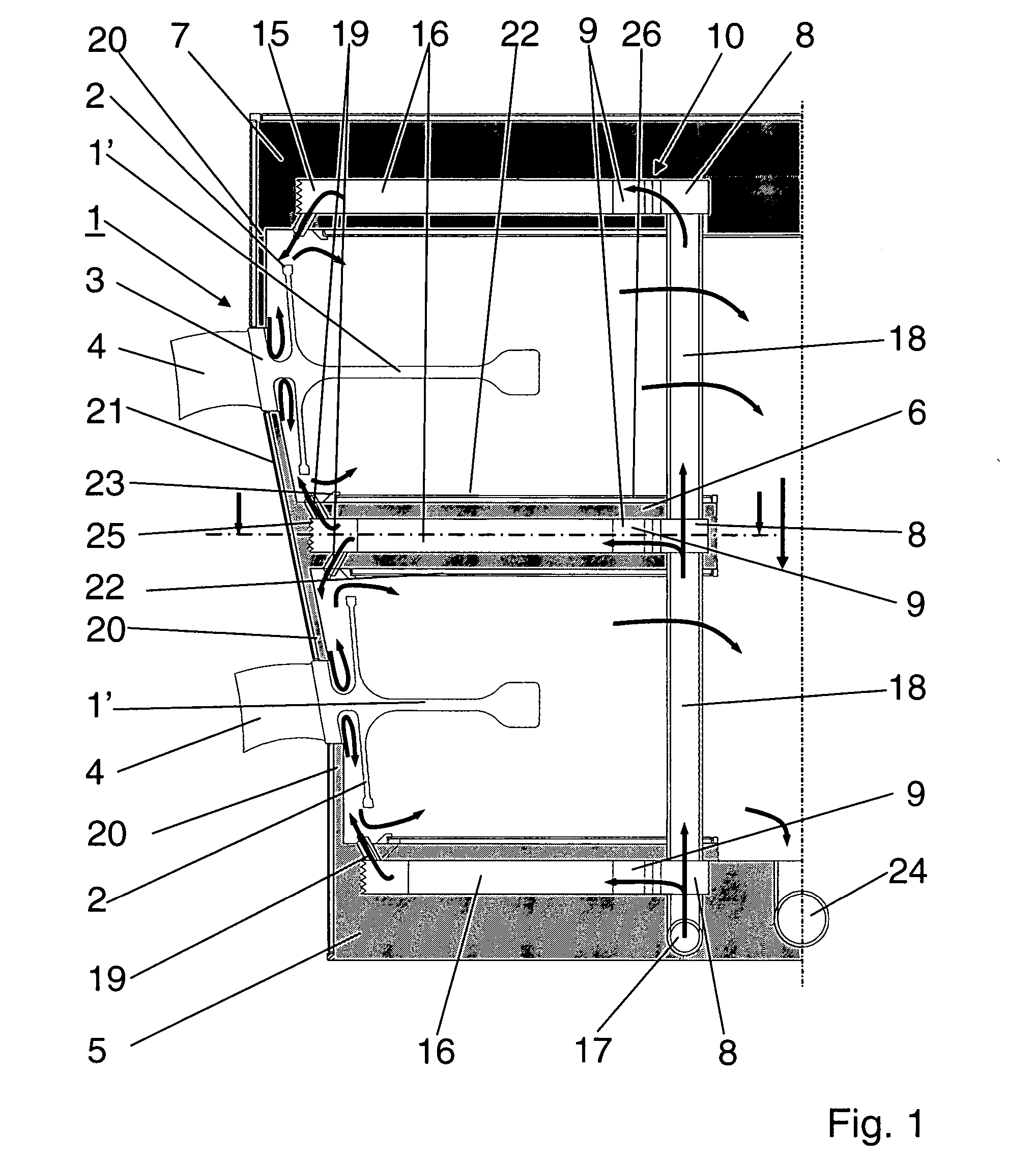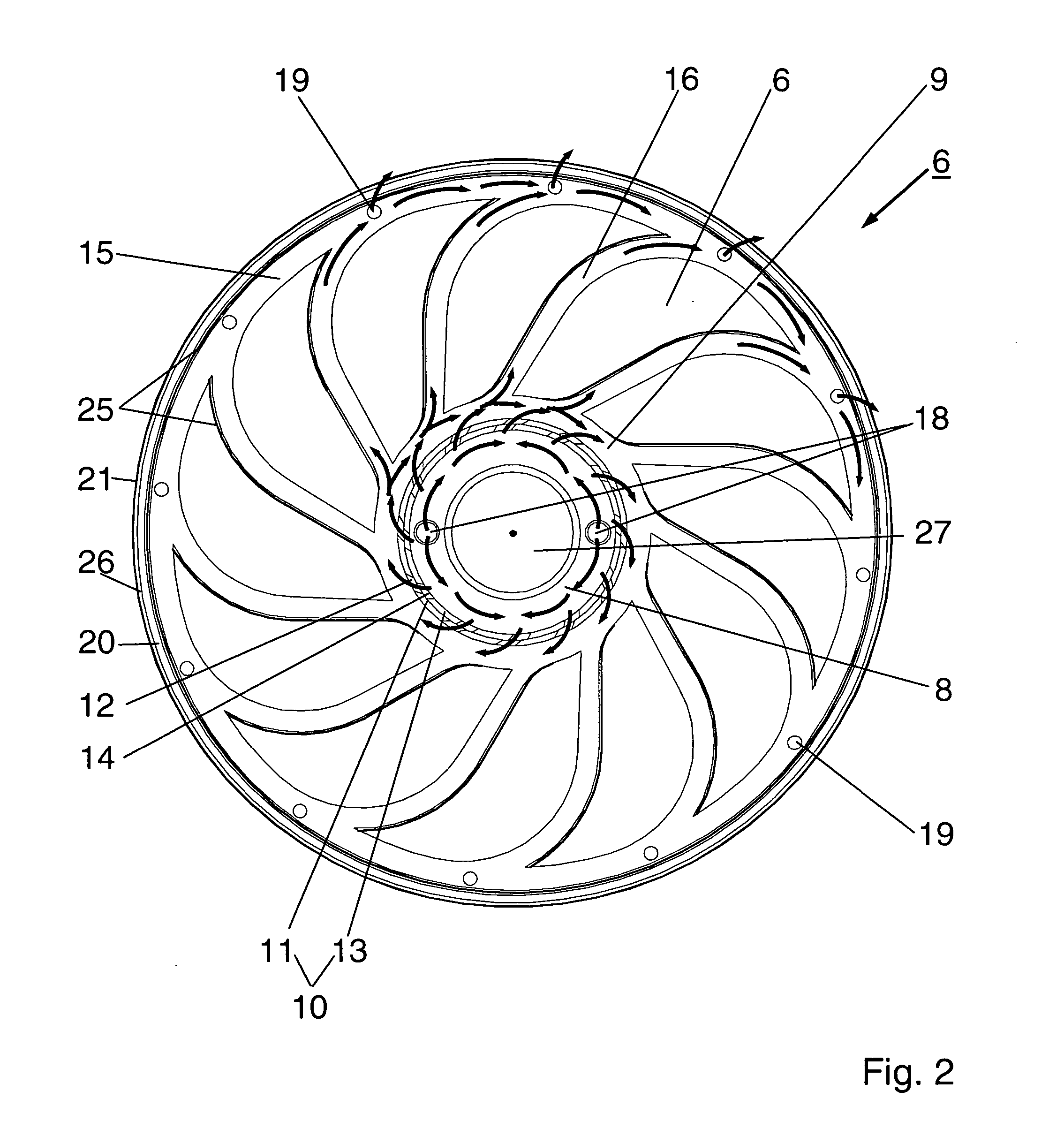Method and apparatus for coating or heat treatment of blisks for aircraft gas turbines
a technology for aircraft gas turbines and blisks, which is applied in the direction of vacuum evaporation coating, liquid fuel engine components, chemical vapor deposition coatings, etc., can solve the problems of reducing the service life of the other parts of the blisk, coating or heat treatment processes, respectively, and achieve the effect of not affecting the service life of the blisk
- Summary
- Abstract
- Description
- Claims
- Application Information
AI Technical Summary
Benefits of technology
Problems solved by technology
Method used
Image
Examples
Embodiment Construction
[0014] A one-piece blisk 1 for the compressor of an aircraft gas turbine comprises a disk 1′ with connecting arms 2 and a blade platform 3 with integral blade airfoils 4. For wear-protection coating of the blade airfoils 4 with carbides or nitrides or for heat treatment subsequent to blade repair, only the blade airfoils 4 are exposed to the temperature required for furnace heat treatment or vapor deposition, while the uncoated parts of the blisk 1 are heated to a temperature which does exceed the normal operating temperature of the aircraft gas turbine, but not a max. acceptable temperature of 320° C. or 350° C., as appropriate for the respective titanium alloy used, for example Ti64 or Ti6246. For this purpose, the blisks 1, with the exception of the blade airfoils 4, are accommodated or held in the cooling apparatus described in the following.
[0015] The cooling apparatus, shown here by way of example of two blisks to be heat-treated, comprises three cooling plates 5 to 7, actual...
PUM
| Property | Measurement | Unit |
|---|---|---|
| Temperature | aaaaa | aaaaa |
| Flow rate | aaaaa | aaaaa |
| Volume | aaaaa | aaaaa |
Abstract
Description
Claims
Application Information
 Login to View More
Login to View More - R&D
- Intellectual Property
- Life Sciences
- Materials
- Tech Scout
- Unparalleled Data Quality
- Higher Quality Content
- 60% Fewer Hallucinations
Browse by: Latest US Patents, China's latest patents, Technical Efficacy Thesaurus, Application Domain, Technology Topic, Popular Technical Reports.
© 2025 PatSnap. All rights reserved.Legal|Privacy policy|Modern Slavery Act Transparency Statement|Sitemap|About US| Contact US: help@patsnap.com



